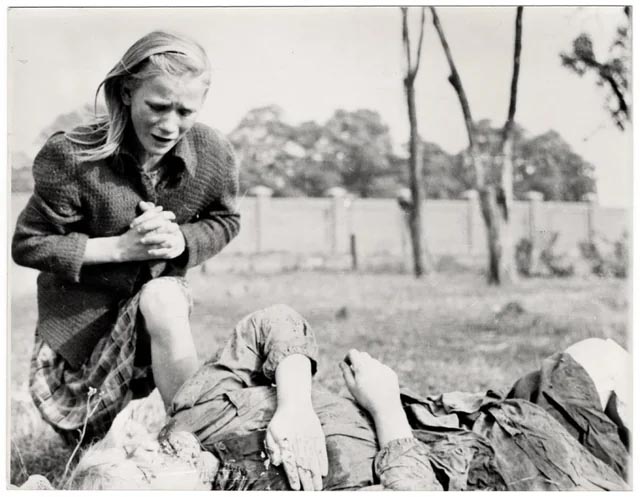
A single photograph captures the heartbreaking grief of a ten-year-old Polish girl, Kazimiera Mika, as she mourns the death of her older sister, Annie, who has just been killed by machine gun fire from two German Luftwaffe aircraft in September 1939.
The two German pilots have just strafed a small group of seven women and girls digging potatoes in a field just outside the city of Warsaw during the German invasion of Poland.
This famous image is actually a single frame from a roll of motion picture film that was taken by American photojournalist, Julien Bryan, that day in an open field near Warsaw.
This image is one of the most haunting and iconic portrayals of human suffering of the Second World War.
Where, exactly, did this tragic event happen?
In this video, researchers delve into the tragic story behind the image, and uncover the exact location where Annie Mika was killed, the day Annie and Kazimiera were digging potatoes in a field just outside the city of Warsaw in September 1939.
Using eyewitness accounts, wartime records, and modern maps, researchers track down the exact place where the lives of Annie and Kazimiera were altered so tragically in their city that has been changed so much since 1939.
These are the words of photographer, Julien Bryan, who was there on the scene that day. This is the story of that tragic moment when sudden death shattered the lives of two young girls, Annie and Kazimiera Mika, in their home city of Warsaw, Poland in 1939.
“As we drove by a small field at the edge of town, we were just a few minutes too late to witness a tragic event, the most incredible of all. Seven women had been digging potatoes in a field. There was no flour in their district, and they were desperate for food.
Suddenly two German planes appeared from nowhere and dropped two bombs only two hundred yards away on a small home. Two women in the house were killed. The potato diggers dropped flat upon the ground, hoping to be unnoticed. After the bombers had gone, the women returned to their work. They had to have food.
But the Nazi fliers were not satisfied with their work. In a few minutes they came back and swooped down to within two hundred feet of the ground, this time raking the field with machine-gun fire. Two of the seven women were killed. The other five escaped somehow.
While I was photographing the bodies, a little ten-year old girl came running up and stood transfixed by one of the dead. The woman was her older sister. The child had never before seen death and couldn’t understand why her sister would not speak to her…
The child looked at us in bewilderment. I threw my arm about her and held her tightly, trying to comfort her. She cried. So did I and the two Polish officers who were with me…”
[Source: Julien Brian, “Warsaw: 1939 Siege; 1959 Warsaw Revisited.” Warsaw, Poland, 1959, pp. 20-21]